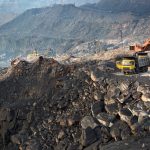IndiaWilds Newsletter Vol. 2 Issue XII
This issue of IndiaWilds Newsletter Vol. 2 Issue XII marks the completion of two years of existence of IndiaWilds as a Conservation and Wildlife Photography forum. In this issue we examine some of the often ignored areas that impact climate change. This newsletter is available online. To view and post your comments check at: http://www.indiawilds.com/diary/indiawilds-newsletter-vol-2-issue-xii
Climate Change:
A year has passed since the farce conducted in Copenhagen summit. Have we become more conscious about climate change? Has it brought any change in our behaviour? Let’s examine whether we are on the right track.
Let’s start with our popular minister for MoEF Shri Jairam Ramesh ridiculing SUV’s as Socially Useless Vehicles. A smart politician that he is, he understands that this attack on the SUVs – that were earlier considered to be symbols of the rich – is not going to harm his political career and even may help him earn a few brownie points. However, is he focusing on the root cause?
Public Transport:
If he would, then he would have expressed dismay – I don’t think if he can do any better – at the shockingly inefficient public transport system which forces individuals to buy a two wheeler or a car or hitch a ride in a fuel guzzling three-wheeler. The sale of these automobiles is helped by a nexus of lending agencies and agents who would be hit if we move towards an efficient public transport system. Furthermore, the housing tax breaks induced home buying spree of individuals, deftly manipulated by the real estate lobby and aided by the poor urban planning by our Government departments ensures that individuals buy residences that are often at a considerable distance from their place of work. These complicated relationships can often rival the intricate web of relationships between various organisms in nature. I am sure it would now be evident to all, that streamlining the public transport system would need a huge focus and commitment and hence didn’t feature in the Hon’ble Minister’s wise cracks. We need a messiah who can streamline our public transport system. However the vacancy for that job is likely to remain for a long time.
Sports and Public Events:
If SUV is a sign of conspicuous consumption, then it is time that we look at some of the wasteful consumptions that we engage in a mass scale. The sports events conducted in the night or events in airconditioned complexes immediately comes to mind. Take the case of conducting night race in Formula 1 Grand Prix, the pinnacle of motor sports.
Night Race in Formula 1:
Formula 1 Grand Prix – the pinnacle of motor sports – has a huge carbon footprint due to its fuel guzzling engines, crisscrossing the world with Boeing loads of equipment etc. As if that was not enough, in 2008 it was decided to conduct the first night race in formula 1 in Singapore, so that the race can be viewed by European viewers at a convenient time. Let us examine its environmental impact.
The F1 race track in Singapore is 5.067 kilometers long. To light this 5.067 kilometer circuit, 108,423 metres of power cables, 240 steel pylons and around 1,600 light projectors are used. Each bulb is of 2000 watts. The total power requirement to light the circuit is supposed to be 3,180,000 watts ie. 3180kwh or 3.18 Mwh. The lighting level with around 3000 lux, is supposed to be four times brighter than the lighting in sports stadiums.
Considering that there would be practice in Friday, qualifying in Saturday and race is Sunday; the race track will be lighted for atleast for a minimum of 18 hours in three days. So the power requirement for lighting the tracks on the three days would be 15*31800000 watts i.e. 18*3.18 Megawatts ie. 57.24 Mega watts. Apart from this there would be additional lights brought by the teams to light up their pit areas and lighting required for grandstands. I am sure they would have kept the track lit for an equal number of hours for testing. So the total consumption can be atleast 100 Mwh.
It is estimated that the average household energy consumption in US is about 936kwh per month. So 100Mwh can light up more than 100 houses for a month or 3000 households for a day in the USA.
Is it not a criminal waste of energy, especially at a time when the dark clouds of climate change are engulfing us?
2022 Football Worldcup in Qatar:
Formula one, though it has a massive fan following, can be branded as elitist and infact was branded as such by our sports minister the previous year. A few days back, FIFA the body that governs football worldwide announced that Qatar is going to host the worldcup in 2022. Qatar, a country where the temperature during June and July goes well beyond 40 deg. C, has decided to use air conditioned stadiums where the temperature can be brought down to around 20 degrees. Well the amazingly rich football players need not worry playing in the heat and dust of the desert, as FIFA has said that there would be air-conditioned stadiums to play in. Is it not crash consumerism that can be avoided? Unfortunately, I didn’t see a single word of condemnation for such a thoughtless action.
Cricket:
There is a saying, if you point a finger, then three fingers point back at you. Formula 1 may be doing this recently. However, Cricket – the sport that has a hysteric fan following in India – is not far behind. Lets consider the floodlighting of the stadiums. Data from MCG (Melbourne Cricket Ground) shows that the four floodlights lighting the stadium consume 360,000kWh, this is based upon a running time of 400 hours over a twelve month term. So every hour consumption is 900kw. If we use this average for the calculations for our T-20 matches, then each T-20 match spanning over three hours will consume 900*3=2700 kw or 2.7 Megawatt. Since the T-20 tournament fixture is yet to be drawn, the number of matches can be anything between 60 and 94. So the power consumed can be atleast 162 Mw considering 60 matches. Per capita consumption of power in India is 612Kwh. So the power consumed in lighting IPL matches can light up the homes of 264 people for a year or 96617 people can get power for a day.
There are far more number of One Day Internationals and T-20 events conducted in the night these days than a child can count. The reason is solely to increase the spectacle. Do we care to raise our voice against these spectacles? These sports events have become energy guzzling orgies. If we don’t raise our voice against those, solely because we love sports, or because these events are popular, then we certainly don’t have a right to engage people in trivial things. Scientists and leaders are all engaged in the blame game on small trivialities, such as impact of gas emitted by cattle on climate change; where as they are silent about these frequently occurring major energy guzzling events.
The talk of cattle reminds me of another issue that was raised by Shri Jairam Ramesh last year and laughed upon by critics – the issue of consumption of beef and its impact on climate change.
Beef & Climate Change:
Vast tracts of virgin rain forests in the Amazon are being ruthlessly razed down to the ground by machines. When one watches the video of these chainsaws cutting down hard growth trees in seconds, that took several hundred years to grow, one becomes speechless. In those areas come up industrial scale soybean farms and cattle ranches primarily for satisfying the beef demand from Europe. Today, a school kid can lecture us – provided we pause to listen – that the trees release moisture to the atmosphere and a large patch of forest often helps its cause by releasing large amount of moisture to the atmosphere which helps in rainfall.
The 2006 report of UN Food and Agriculture Organization (FAO) titled “Livestock’s Long Shadow -Environmental Issues and Options” mentions that Livestock sector generates more greenhouse gas emissions than the transport sector, 18% from the livestock sector vs 13% from the transport sector. As we know, increased prosperity leads to increase in consumption of not only food grains but also of animal proteins. The FAO report has confirmed that with mindboggling statistics. The global meat production is going to double from 229 million tonnes in 1999/2001 to 465 tonnes in 2050. Livestock uses 30% of the earth’s entire land surface and 33% of the global arable land is used for producing feed for livestock.
I am not sure if the developed world is going to give up on their luxuries of beef eating, as it requires a tremendous amount of awareness generation. However, a partial reduction is also going to have a huge impact.
Climate change is going to harm developing countries like India the most, as a major part of our population lying below the poverty line is going to be impacted the most. Climate changed induced diseases, submergence of coastal areas and islands, water scarcity due to perennial rivers turning seasonal are some of the few issues that is going to impact our people. With nearly half of the population yet to be connected to the electricity grid, which is at present primarily powered by power from polluting thermal power plants, and hydel projects inducing submergence of vast tracts of forests, there is no sign of green house gas emissions reducing. The aspirations of the people to ape the western lifestyle, symbolized by the SUVs may hog the limelight; however, there is no solution or will power in the political class to contain climate change is in sight.
Other Conservation Issues:
Call for banning synthetic pesticides in and around our wilderness areas:
Our wilderness areas givers birth to our numerous streams and rivers and serve as the lifeline of our country and our economy. Spraying of poisonous chemicals as pesticides leads to accumulation of those in the soil and pollute our fresh water sources. A Ministry of Chemicals and Fertilisers project has clearly shown that synthetic pesticides can be replaced by neem based pesticides. Hence, with a clear alternative in sight, It is time to ban synthetic pesticides around National parks, Sanctuaries, Reserve Forests, protected areas, wetlands and areas of ecological importance. For further details, please check here:
http://www.indiawilds.com/forums/showthread.php?t=5539
Supreme Court bans Plastic in pan masala sachets:
In a far reaching move, the Hon’ble Supreme Court has banned use of plastic in pan masala sachets. This is expected to reduce the amount of littering in our wilderness areas. For more details on this issue you can check here: http://www.indiawilds.com/forums/showthread.php?t=5563
Wish the Hon’ble Supreme Court can ban use of plastics in all our wilderness areas. For the deleterious impact of plastics you can check here: http://www.indiawilds.com/forums/showthread.php?t=108
Centre Issues Wetland Conservation Guidelines:
Our wetlands, are being indiscriminately filled up and concretized after being branded as wastelands. Hopefully, the issue of wetland conservation guidelines by the centre will help bring in more focus in saving our wetlands. For further details you can check here: http://www.indiawilds.com/forums/showthread.php?t=5499
Train driver jailed for running over elephants:
In a far reaching move, a train driver who had run over elephants has been handed a jail sentence by the court. I think this incident will wake up the callous railway authorities and will force them to think of long term solution to the problem and order for alternate alignment of railway tracks. For further details please check here:
http://www.indiawilds.com/forums/showthread.php?t=5429
Seizure of Pangolin Scales:
We have to be careful about our lesser known species, else they are going to be extirpated much before the tiger.
http://www.indiawilds.com/forums/showthread.php?t=5484
Notable Images of the Year 2010:
Images shared by our members in 2010 that depict interesting animal behaviour or are just plain beautiful�.
Mammals:
Pair.. by Praveen P Mohandas
http://www.indiawilds.com/forums/showthread.php?t=3417
A Dream called Tiger by Subramanya CK
http://www.indiawilds.com/forums/showthread.php?t=3231
Elephant digger by Dipankar Majumdar
http://www.indiawilds.com/forums/showthread.php?t=3626
Birds:
Black-winged Stilt by Gautam Biswas
http://www.indiawilds.com/forums/showthread.php?t=5434
Purple rumped Sunbird by Amit Kalele
http://www.indiawilds.com/forums/showthread.php?t=4535
Kestrel Hunt by Tushar Dixit
http://www.indiawilds.com/forums/showthread.php?t=5555
Landscapes:
Rain�at last! By Dr. Jitendra Katre
http://www.indiawilds.com/forums/showthread.php?t=4197
And clouds cover the jungle�. By Sagar Patil (with a compact camera)
http://www.indiawilds.com/forums/showthread.php?t=3876
Sunset Hue by Dr. Kalpamoit Kakati
http://www.indiawilds.com/forums/showthread.php?t=5365
Others:
The Green Predator by Dr. Hari Venkatesh K R
http://www.indiawilds.com/forums/showthread.php?t=4206
Master of Disguise by Vikram Gupchup
http://www.indiawilds.com/forums/showthread.php?t=5041
Kandil-pushpa at Kaas plateau
http://www.indiawilds.com/forums/showthread.php?t=5058
I look forward to your inputs and your support in preserving the last tracts of wilderness and wildlife left in this beautiful country. For other interesting articles and photographs please check:
http://www.indiawilds.com/forums/
The link to this Newsletter is available at: http://www.indiawilds.com/diary/indiawilds-newsletter-vol-2-issue-xii
All the newsletters can be found online at: http://www.indiawilds.com/diary/category/newsletter
In case, any member has forgotten his/her user id and password, then he/she can email the admin at the following email id administrator@indiawilds.com
Regards,
Sabyasachi Patra
www.indiawilds.com
Profile: http://www.indiawilds.com/profile.htm
Contact: http://www.indiawilds.com/contact%20us.htm
Facebook: http://www.facebook.com/pages/IndiaWilds/132629240481
- GoPro Hero 12 Black - 6 September,2023
- Leopards: The Last Stand - 2 July,2023
- Drifting in the Waters of Sundarbans - 26 March,2023










Dear Mr Patra
Received with thanks, the Newsletter. Very thought provoking articles. I was passing the Singapore F1 circuit that night when the event was held and the same thoughts crossed my mind. It brings to mind the last dialogues of the doctor in the film ‘Bridge on the River Kwai’. “Is everybody mad…, or is it me who is going mad…, or is it the sun?”
I dread to think of the day when my son will say “dad, what is the call of a Chital?” and I shall reply “sorry son, you shall never know because my generation finished them all.”
By the way, I am leaving my sea going career of the last twenty years to finally persue my dream of becoming a wild life photographer. Don’t know whether I shall succeed but I am going to give it a jolly good try.
My regards to you, all the members and the moderators.
Yours truly
Pralay Lahiry
I am sharing a news article published in the Hindustan Times which quotes a Government study that industry is to be blamed for pollution and not cars.
The link to the article is here: http://www.hindustantimes.com/Blame-industry-not-cars-for-pollution/Article1-651549.aspx
The article is also reproduced below.
Sabyasachi
Blame industry, not cars, for pollution
Chetan Chauhan, Hindustan Times
New Delhi, January 17, 2011
A new government study has broken the popular belief that vehicles are the major source of Particulate Matter (PM) air pollution. Instead, industrial emissions and road dust are the prominent causes, says environment ministry�s Source Appropriation Study in seven big cities of
India.
Particulate matter was the fastest growing pollutant in most Indian cities but its sources were not known.
The only study of its type, first reported by HT in June 2010 and reviewed by an inter-ministerial group said that vehicles are the highest contributor to PM 10 (particulate matter of 10 micros or more) levels only in Bangalore. They were found to be third or fourth contributor in the remaining six cities, Delhi, Mumbai, Chennai, Pune, Kanpur and Chennai.
�Despite the large fleet of vehicles in Delhi, the share is less due to presence of other significant sources such as power plants, road dust re-suspension,� the report vetted by air pollution experts in Europe and United States, said.
Vehicular contribution to PM pollution was only seven percent whereas road dust contributed about 50% to total PM 10, which was found to be highest in Delhi among the cities surveyed.
Road dust re-suspension is primarily because of undone payments, roadside eateries and construction activity without pollution control measures.
Industrial activity was found to be the highest contributor for PM 10 pollution, which triggers lung ailments, in Mumbai and Kanpur. Large industries were the cause in Mumbai whereas small-scale industries produce high particulate matter in Kanpur. Power plants within city boundary limits were the primary cause for industry contributing 22 % in Delhi.
The study also found that domestic use of Liquid Petroleum Gas (LPG) was also a cause for particulate matter pollution. Including PM 2.5, a fine pollutant whose repeated exposure can trigger heart attacks.
Another startling revelation was that vehicles are not the major contributor to nitrogen oxide (NOX) pollution in Delhi and Mumbai. The fumes from diesel vehicles were considered the major source of rising levels of this gaseous pollutant in Delhi, where industries have been blamed for his high concentration.
However, the study found that in transport sector heavy-duty vehicles, especially those running on diesel, were the biggest contributor to pollution levels.